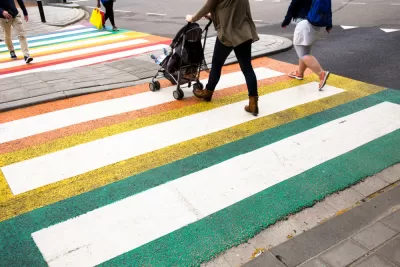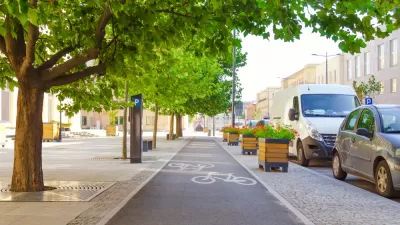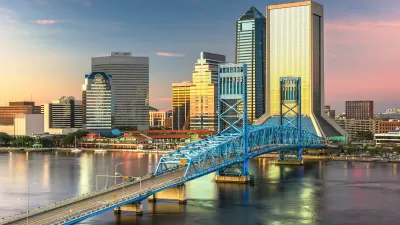While traffic deaths in the United States keep rising, progress in cities like Hoboken and New York prove that, with the right resources, eliminating traffic deaths is possible.

In a bright spot for pedestrian safety in the United States, Angie Schmitt, writing for Bloomberg CityLab, highlights the U.S. cities where Vision Zero efforts are yielding positive results, particularly New York City and some of its smaller neighbors. According to the article, “Between 2010 and 2020, NYC’s traffic deaths fell 19%, while the US death rate rose 8% — an improvement that translates into a significant number of saved lives.”
Schmitt acknowledges New York’s density and uniquely robust toolkit, but writes that the city consciously devoted more resources to road safety than other major U.S. metropolises. Nearby Hoboken, New Jersey hasn’t had a traffic death in four years; similarly, Jersey City has not had a traffic death on non-state roads in 2022, since implementing more aggressive Vision Zero policies.
Schmitt warns us not to celebrate yet—after all, “Nationally, thanks to a combination of factors — most importantly growth in SUVs and extra-large pickups — deaths of pedestrians have grown 62% nationally since 2009, according to the nonprofit advocacy organization Smart Growth America.” But the successes seen in cities like New York and Hoboken show that progress is possible, if policies at the state and federal level can align with local needs. “There is evidence that well-funded sustained investments in reducing traffic deaths can work, not just abroad but in the US.”
FULL STORY: Where ‘Vision Zero’ Is Working

Planetizen Federal Action Tracker
A weekly monitor of how Trump’s orders and actions are impacting planners and planning in America.

Maui's Vacation Rental Debate Turns Ugly
Verbal attacks, misinformation campaigns and fistfights plague a high-stakes debate to convert thousands of vacation rentals into long-term housing.

Restaurant Patios Were a Pandemic Win — Why Were They so Hard to Keep?
Social distancing requirements and changes in travel patterns prompted cities to pilot new uses for street and sidewalk space. Then it got complicated.

In California Battle of Housing vs. Environment, Housing Just Won
A new state law significantly limits the power of CEQA, an environmental review law that served as a powerful tool for blocking new development.

Boulder Eliminates Parking Minimums Citywide
Officials estimate the cost of building a single underground parking space at up to $100,000.

Orange County, Florida Adopts Largest US “Sprawl Repair” Code
The ‘Orange Code’ seeks to rectify decades of sprawl-inducing, car-oriented development.
Urban Design for Planners 1: Software Tools
This six-course series explores essential urban design concepts using open source software and equips planners with the tools they need to participate fully in the urban design process.
Planning for Universal Design
Learn the tools for implementing Universal Design in planning regulations.
Heyer Gruel & Associates PA
JM Goldson LLC
Custer County Colorado
City of Camden Redevelopment Agency
City of Astoria
Transportation Research & Education Center (TREC) at Portland State University
Jefferson Parish Government
Camden Redevelopment Agency
City of Claremont





























